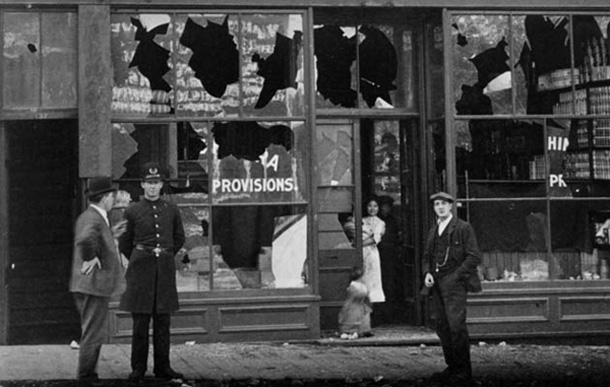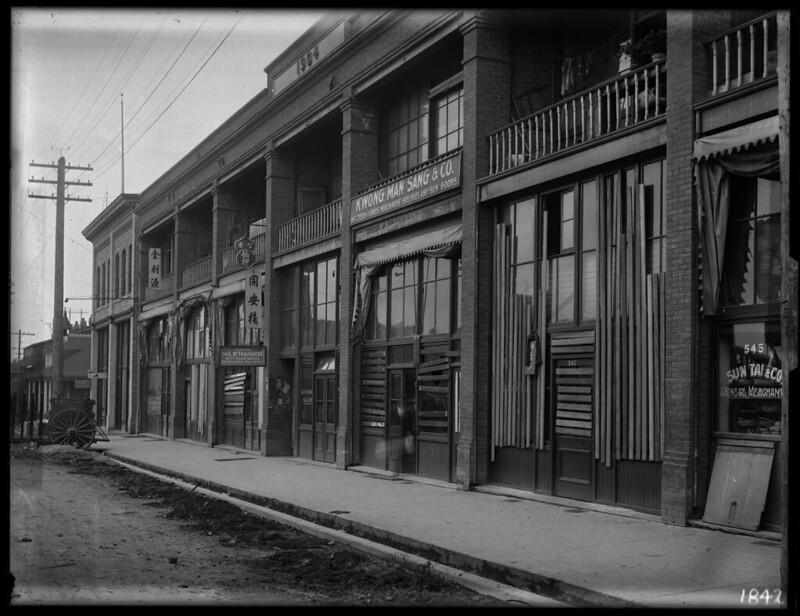
Content warning: this article discusses police violence and racism. Some elements may be disturbing for some readers.
I’d like to thank Dr. Chris Willmore for his teachings on early Chinese-Canadian economic racism in Canada. Many of my thoughts can be traced back in some form to his research.
In January 2020, Mona Wang, a nursing student at UBCO, was brutally dragged down an apartment hallway by the RCMP during a mental health check. In a surveillance video from the scene, an RCMP officer appeared to step on Wang’s head while she was handcuffed and on the floor.
Now, as the Black Lives Matter (BLM) movement gains traction, Wang has chosen to speak up about her experiences. Watching this tape has made me reflect on the role of Asian allies in the Black Lives Matter movement— and more broadly — anti-Asian racism in Canada.
Why was there no public outcry until now? Why did it take the BLM movement for the public and the government to react to Wang’s case? Why haven’t Asian communities spoken up more against racism in Canada? What is my role in all of this?
Wang’s experience of racism may have never been brought to light, if not for BLM. In my opinion, Wang’s case is not an isolated incident, but a result of long-term systemic racism.
A history of systemic racism on Chinese-Canadians
Throughout history, Chinese labourers have contributed much to the development of Canada. They worked in the most dangerous industries for exploitative wages, such as building the Canada Pacific Railroad and mining.
A typical Chinese railway labourer would only earn $1 each day, while a white person doing the same work earned between $1.50 to $2.50. With their low wages, Chinese labourers were barely surviving — they had to work hard, eat less, and squeeze into small rooms every day.
From 1878 – 1973, blatant systemic racism through discriminatory taxes and laws exploited the labour of Chinese people in Canada. In 1878, the B.C. government would collect a $10 quarterly tax on every “Chinaman”. This was later increased to $100. The Federal government also asked up to a $500 head-tax on every Chinese person entering Canada.

In 1907, the School Board of Victoria used poor English ability as an excuse to refuse the educational rights of Chinese children. Meanwhile, organized anti-Asian riots broke out in Vancouver. When the riots began, Chinese immigrants chose to stay indoors and stay out of trouble. Eventually, as more Chinese stores got looted, Chinese were forced to have collaborative labour strikes.
Chinese compromise or tuoxie did not get respect nor mercy from the government or the public. Instead, the influential daily paper, The Colonist, in B.C. constantly showed its resentment and dislike of Chinese immigrants. As anti-Asian sentiment grew, Canada issued its first Chinese Exclusion Act in 1923, prohibiting Chinese immigration into the country. This racist act lasted for 20 years, with Chinese people only nominally treated as equals after Prime Minister Pierre Elliot Trudeau’s visit to China in 1973.
Chinese Canadians today
Our current surface recognition of Chinese-Canadian equality was only achieved by the supreme efforts of Chinese participation in civil society, such as Jon Joe and the Chinese Consolidated Benevolent Association. Jon Joe has dedicated his life to help Chinese immigrants to gain justice and human rights in Canada. His daughter, Charlayne Thornton-Joe, continues in that tradition as a Victoria city councilor.
But anti-Asian racism continues, and we can no longer be silent.
How many more stories like Wang’s are out there? If we, as Chinese-Canadians do not speak out against anti-Asian racism in Canada, how can we expect anything to change? How can we expect others to stand out for us?
It is a good sign that Chinese people protested for Mona on July 4th in multiple cities. However, Chinese and Asian voices are still underrepresented in media. Their issues are less talked about and their faces are less seen in social movements. Wang is lucky because her story was heard during BLM. Confucianist ways of living still guides the lives of many Chinese people in Canada. Our ways of resistance are often modest, restrained — and unheard.
A hundred years after the first Chinese-exclusion Act, there is now a spike in anti-Asian hate crimes. Chinese heritage buildings in Vancouver and Victoria were recently vandalized with racist graffiti. I’m afraid that Mona Wang’s case will happen over and over again on Chinese people and other Asian minorities.








